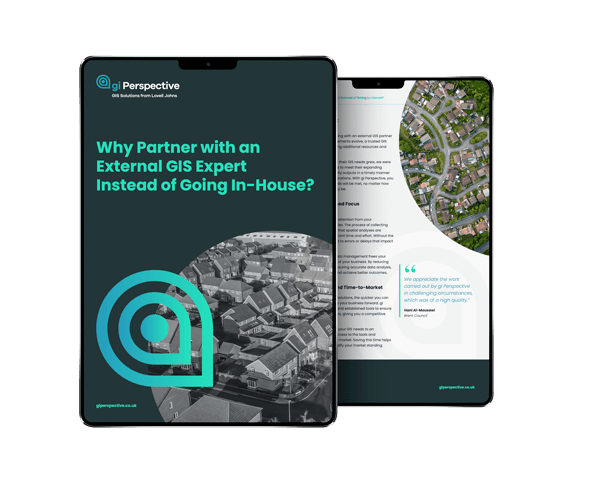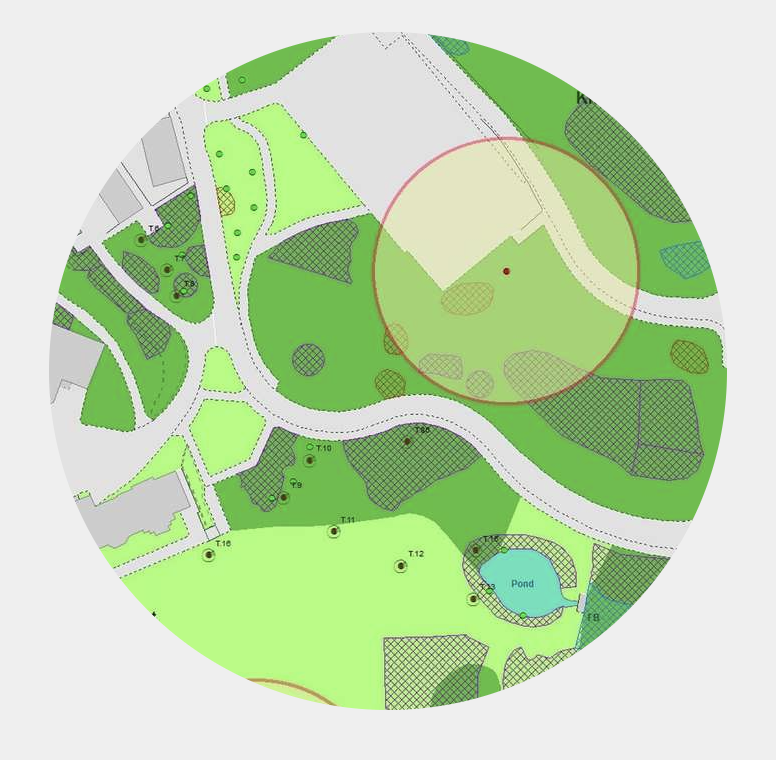Independent GIS Consultancy Services
from gi Perspective
Our team of experienced GIS consultants deliver quality geographic information and digital mapping solutions with unmatched expertise and personalised service.
For more information, please call: +44 (0) 1993 880 944
Our team of experienced GIS consultants deliver quality geographic information and digital mapping solutions with unmatched expertise and personalised service.
We examine and interpret the patterns, relationships, and trends in your geographic data to produce insightful maps and help you make informed decisions.
Lots of geographic data, but all in different formats? We collect and transform information from various sources into standardised digital formats for analysis and reporting.
Our GIS consultants deliver maps and associated tabular data to reveal patterns and narrative in your geographic information.
Our GIS consultants collate data from many places, including Ordnance Survey, Office for National Statistics, Environment Agency, English Heritage, Land Registry, NASA, and more!
If you’ve got paper maps, charts, or other physical cartographic materials, we can scan and digitise them - making them accessible and usable in GIS software.
We love to share our knowledge! Our GIS consultants are happy to help with one-off or ongoing GIS projects, to help you keep on top of your workload and become more confident with GIS.
If your GIS project is grinding to a halt, our remote GIS consultants can offer expert advice and extra help to get it back on track.
As an independent GIS consultancy, we can advise on - and build - the most suitable GIS application for your functionality, usage and budget.
As well as development and support for GIS, our consultants can provide customised training Esri ArcGIS software using your own project data.
Geographic Information Systems have become crucial tools for businesses. By helping organisations visualise data, conduct spatial analysis, and make decisions, GIS plays a key role in driving success.
While it may seem appealing to develop an in-house GIS team for complete control, partnering with a trusted GIS provider often brings more benefits, especially when considering cost, expertise, scalability, and risk reduction.
Our experienced, UK-based GIS consultants help organisations from all over the world achieve more with geographic data. Whether you’re a seasoned GIS user or just starting out with a mapping project, we provide trusted, personal GIS consultancy services for all budgets.
Wildfire risk analysis and GIS layer development
gi Perspective were commissioned by Natural Resource Wales, the Welsh Government body responsible for environment and natural resources, to undertake a wildfire risk analysis and GIS layer development.
Our experienced, UK-based GIS consultants help organisations from all over the world achieve more with geographic data. Whether you’re a seasoned GIS user or just starting out with a mapping project, we provide trusted, personal GIS consultancy services for all budgets."
Martin Woods
Head of Asset Management
Lincolnshire Housing Partnership
The project was delivered within budget and I am delighted with the results. I would imagine that your experience and knowledge in data and specialist mapping services would be invaluable to other health care organisations."
Judy Harris
OSA Project Manager
British Lung Foundation
Your information will only be used to further your enquiry and is protected by our Privacy Policy.
Find out more how a GIS partner can benefit your organisation
Following a competitive tender process, gi Perspective were commissioned by Natural Resource Wales, the Welsh Government body responsible for environment and natural resources, to undertake a wildfire risk analysis and GIS layer development.
Our remit was to use GIS datasets, including data on historical wildfires, to create a wildfire risk index for a region of South Wales. We worked in collaboration with the ‘Healthy Hillsides’ project team, whose work aims to minimise the impact and severity of the frequent wildfires in the South Wales Valleys through better natural resource management.
Our detailed plan set out the key project stages, from Engagement and Data Discovery, through Model Conceptualisation and Design, to the Risk Analysis and Refinement. Key risk elements were identified and weighted through a combination of expert stakeholder input, literature review and statistical analysis. A risk map is only as strong as the data inputs, so considerable time was spent reviewing and improving key datasets, notably the vegetation habitats data which describes the potential fuels for wildfires. Meanwhile, a sophisticated model was developed, using raster analysis in QGIS to quantify the risk of Ignitions, wildfire Spread and Impacts for each 25m x 25m cell across the study area. Initial risk scores were reviewed by the project team and other local stakeholders, and the model was revised to ensure that it was capturing the situations of greatest concern for local firefighters.
The assessment identified the 3 key risk factor datasets as historical wildfire ignitions, land cover habitat type and buildings. Lower weightings were given to many other layers including deprivation, slope, countryside access layers and exposed infrastructure. Wildfire risk was quantified across the study area and mapped as raster and vector layers, with PDF maps for stakeholders also highlighting the highest risk areas where interventions would be most valuable. The method used proved an efficient tool for approximating wildfire risk for those without recourse to specialist wildfire modelling software which can model the dynamic spread of fire across the landscape under particular weather conditions. Initial feedback for a few key fire station areas has confirmed that the risk map matches with local expectations and insight about areas of greatest risk.






